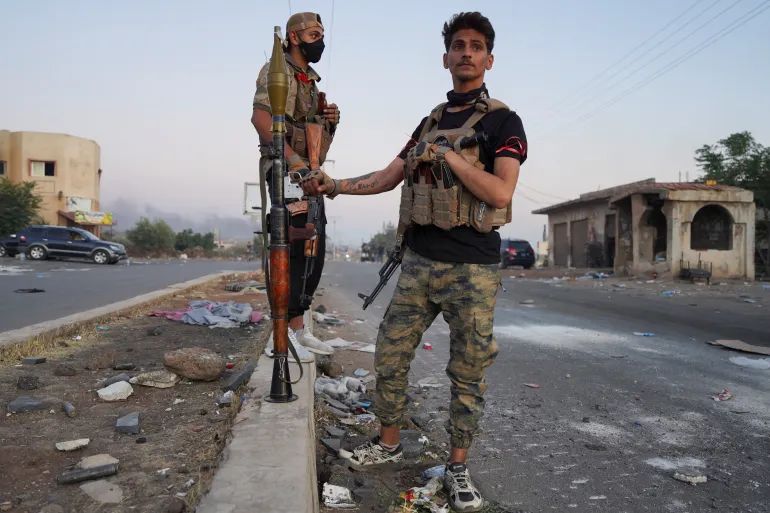In a surprising yet pivotal development, Syria and Israel have agreed to a U.S.-brokered ceasefire following days of intense military escalation around the Suwayda region. The truce, confirmed by a senior U.S. envoy, comes amid fears that the skirmishes could ignite a broader conflict in an already volatile Middle East.
While the ceasefire brings a temporary pause to hostilities, tensions remain dangerously high as both nations continue to grapple with long-standing animosities and shifting regional alliances.
The Ceasefire Deal: An Urgent Diplomatic Push
According to U.S. diplomatic sources, the ceasefire was finalized after back-channel negotiations involving American and European officials. The deal reportedly halts all offensive operations along the Israeli-occupied Golan Heights and southern Syrian border regions, including Suwayda—an area that recently became a flashpoint.
The Syrian transitional government, which replaced Bashar al-Assad’s regime in late 2024, confirmed its commitment to the ceasefire. In contrast to past ceasefires, this agreement includes a mechanism for real-time communication between Syrian and Israeli military liaisons through U.N. peacekeeping intermediaries.
The Suwayda Clashes: What Triggered the Violence?
The city of Suwayda, traditionally known for its Druze-majority population and relative neutrality during Syria’s civil war, witnessed an unprecedented eruption of violence over the past week.
Syrian government sources claim Israeli drones and artillery targeted military installations near the city, while Israel asserts it was responding to Iranian-linked militia activity and missile threats originating from southern Syria.
Civilian casualties, including Druze community members, were reported, prompting widespread anger and international concern. The escalating violence threatened to draw in Hezbollah and other regional actors, raising fears of a wider war.
Israel’s Position: Red Lines and Strategic Concerns
Israel continues to assert that it will not tolerate any Iranian military buildup on Syrian soil. Tel Aviv has long considered Iranian-affiliated militias—especially Hezbollah—a direct threat to its national security.
The recent Israeli strikes were reportedly aimed at disrupting weapons convoys and radar systems believed to be used by these groups. However, with civilian areas increasingly caught in the crossfire, pressure from international actors, especially Washington, intensified.
U.S. Involvement: Reasserting Diplomatic Influence
The Biden administration, facing global criticism for its waning diplomatic influence in the region, seized the opportunity to broker a deal. A senior U.S. official described the ceasefire as “fragile but essential,” adding that it reflects Washington’s renewed commitment to preventing further chaos in Syria and maintaining stability near Israeli borders.
Analysts see this as a calculated move by the U.S. to restore credibility in the region after years of disengagement and shifting priorities.
The Role of the Syrian Transitional Government
The newly installed Syrian transitional government has surprised observers with its diplomatic flexibility. Unlike the rigid posture of the Assad regime, the transitional leadership has signaled openness to dialogue and coordination with international institutions.
Their quick acceptance of the ceasefire and cooperation with U.N. monitors may reflect a desire to gain global legitimacy and economic aid for post-conflict reconstruction.
Local Response in Suwayda: A Mix of Hope and Skepticism
On the ground in Suwayda, the ceasefire has brought a much-needed lull in fighting. However, local residents and community leaders remain skeptical. Many fear the pause is temporary and that underlying tensions will resurface.
Druze elders have called for international observers to remain in the region and for all external military actors—including Iranian-backed groups and Israeli drones—to fully withdraw from civilian zones.
Geopolitical Implications: What’s Next for the Region?
The ceasefire comes at a time when the Middle East is undergoing tectonic shifts. Iran’s influence in Syria, ongoing U.S. support for Israel, and new Arab-Israeli normalization talks all create a complex and unstable environment.
The truce may prevent an immediate war, but it does not resolve the core disputes—especially over Iranian involvement in Syria, border demarcation issues, and the future of Israeli-controlled Golan Heights.
Conclusion: A Fragile Truce in a Region on Edge
While the U.S.-brokered Syria-Israel ceasefire marks a rare diplomatic success, it is, at best, a temporary solution to a deeply rooted conflict. The agreement shows that dialogue is possible even between enemies, but sustaining peace will require serious, long-term commitments from all sides—especially in a region where history often repeats itself in blood.
The coming weeks will test the durability of this truce. Whether it leads to a broader political settlement or collapses under renewed fire remains to be seen.
Check More:
- US Defence Forces: 7 Deadly Wars That Forged a Superpower
- Israel Attack on Damascus and Suwayda: July 2025 Crisis Deepens
- The Silent War Between Iran and Israel: A Shadow Conflict Shaping the Middle East

